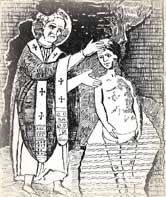
I am a Christian and cannot sacrifice to the gods. I heartily
thank Almighty God who is pleased to set me free from the chains of this
body." With these bold words, spoken in front of hundreds of onlookers,
Bishop Cyprian of Carthage faced death under Emperor Valerian. Many of
the pagans standing by were deeply moved.
Cyprian was well-known to them. As Bishop of Carthage, he was an
eminent figure in North Africa. But even before becoming a church leader
he had been a notable man.
Born into wealth around 200, Cyprian inherited a large estate. He
trained in rhetoric. Curiously it was this training which brought him to
Christ. Genuinely gifted as a speaker, he opened his own school. As part
of the course, he debated philosophers and Christians. Convinced by the
arguments of a Christian elder, he became a convert when he was about 45
years old. "A second birth created me a new man by means of the Spirit
breathed from heaven," he wrote. Immediately he applied for admission to
the church. With zeal, he gave away his wealth and devoted himself to
poverty, celibacy, and Bible studies.
In those days it was popular for Christians to receive baptism at
Easter. This has led scholars to argue that Cyprian received baptism
on this day, April 18, 246, the Eve of Easter.
Upon the death of Bishop Donatus in 248, less than two years after
Cyprian's conversion, and over his protests, the people elected him
Bishop of Carthage. Pontius, one of his clergy, wrote an admiring
biography telling how Cyprian handled himself. His countenance was
joyous, he wrote, and he was a man to be both revered and loved.
But well might Cyprian protest his election! His task was never easy.
Many older men felt slighted by his swift ascendancy and envied him his
office. Among the clergy were others who neglected their duties. Cyprian
disciplined them, and this increased resentment against him. In 250, a
persecution by Emperor Decian broke out. The pagans shouted, "Cyprian to
the lions!" But the bishop escaped into hiding. His presence in Carthage
would intensify persecution, he explained. Writing letters, he tried to
hold the church together in his absence. This was not easy, for the
Christians who stayed and endured suffering looked down on Cyprian. In
251 Gallus became emperor and Cyprian returned to his church.
Those who had stood firm under suffering called themselves "the
confessors." They gained great prestige from this. Others had renounced
their faith. These were called the "lapsed." The church split over how
to allow the lapsed back in. Cyprian's disagreement with the Bishop of
Rome over the issue of the lapsed caused him to write an influential
book,
Unity of the Church. In it he argued that the church is
not the community of those who are already saved. Instead, it is an ark
of salvation for all men, a school for sinners. Today many Protestants
accept this teaching but refuse to accept Cyprian's other claim that the
bishops of the church, as the heirs of the apostles, are the agents
through whom God dispenses grace. "He who has not the church for his
mother, has not God for his Father," Cyprian wrote. His view is also
opposed to that which makes the pope pre-eminent. Protestants argue that
where two or three are gathered in Christ's name, Christ is with them
and quote Peter to show that every Christian is a priest (1 Peter 2:9).
When a fearsome plague erupted in Carthage in 252-254, the pagans
abandoned the sick in the streets. People rushed about in terror.
Cyprian told his Christians to care for the sick, including dying
pagans. The people obeyed, despite the fact the pagans blamed them for
the disease and persecuted them. Soon afterward, Bishop Cyprian was
brought before the pro-consul Aspasius Paternus. Aspasius banished him
to a town by the sea. When Aspasius died, Cyprian returned to Carthage.
He was seized by the new governor and condemned to death. At the place
of execution, he knelt in prayer and tied the bandage over his eyes with
his own hand. To the executioner he gave a piece of gold. Thus he was
beheaded on September 14, 258, retaining his bold confession to the end.
Bibliography:
- Adapted from Christian History Institute's Glimpses #162.
- Aland, Kurt. Saints and Sinners; men and ideas in the early
church. Philadelphia: Fortress Press, 1970.
- Ante-Nicene fathers: translations of the writings of the
fathers down to A.D. 325. Edited by Alexander Roberts and James
Donaldson. American reprint of the Edinburgh edition. Revised and
chronologically arranged, with brief prefaces and occasional notes, by
A. Cleveland Coxe. New York: Scribner's, 1926.
- Benson, Edward White. Cyprian: his life, his times, his work.
London, New York, Macmillan, 1897.
- Chapman, John. "St. Cyprian of Carthage." The Catholic
Encyclopedia. New York: Robert Appleton, 1908.
- "Cyprian, St." The Oxford Dictionary of the Christian
Church. Edited by F. L. Cross and E. A. Livingstone. Oxford,
1997.
- The Library of Christian Classics. Westminster Press,
1956.
Read this article at - http://www.christianity.com/church/church-history/timeline/1-300/cyprian-baptized-in-carthage-11629618.html
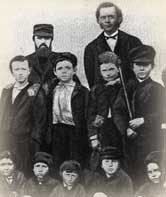 Dwight L. Moody didn't attend school beyond the fifth grade; he
couldn't spell, and his grammar was awful. His manners were often brash
and crude, and he never became an ordained minister. Once, before his
conversion, he so outraged an Italian shoe salesmen with a prank, that
the man chased him with a sharp knife, clearly intending to kill him.
Yet, Dwight L. Moody was used by God to lead thousands of people to
Christ. Moody's life of Christian service began with his conversion
Dwight L. Moody didn't attend school beyond the fifth grade; he
couldn't spell, and his grammar was awful. His manners were often brash
and crude, and he never became an ordained minister. Once, before his
conversion, he so outraged an Italian shoe salesmen with a prank, that
the man chased him with a sharp knife, clearly intending to kill him.
Yet, Dwight L. Moody was used by God to lead thousands of people to
Christ. Moody's life of Christian service began with his conversion
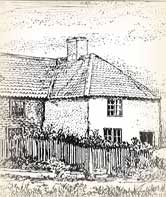 William Bradford attended two schools: the school of hard knocks, and
the school of Christ. He lost his father at sixteen months old. Shortly
after that, he was sent to live first with a grandfather and then with
other relatives. He became a devout student of the Bible when just
twelve, reading it through. When he was seventeen, he joined a group
that wanted to pull out of the Church of England.
William Bradford attended two schools: the school of hard knocks, and
the school of Christ. He lost his father at sixteen months old. Shortly
after that, he was sent to live first with a grandfather and then with
other relatives. He became a devout student of the Bible when just
twelve, reading it through. When he was seventeen, he joined a group
that wanted to pull out of the Church of England.
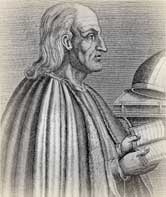 When St. Anselm died
When St. Anselm died 
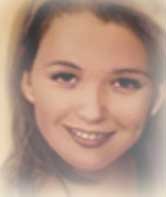 Christian martyrs in 20th century America? It happened
Christian martyrs in 20th century America? It happened 
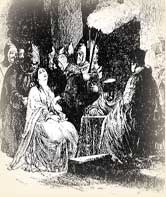 Two of the darkest blots on Christian history are the witch hunts of
Medieval Europe and the Inquisition--and the former employed the
apparatus of the latter. No one knows for sure how many people suffered
at the hands of the Inquisition. Thousands did. To most churchmen and
governments it seemed self-evident that orthodoxy must be preserved,
whatever the price.
Two of the darkest blots on Christian history are the witch hunts of
Medieval Europe and the Inquisition--and the former employed the
apparatus of the latter. No one knows for sure how many people suffered
at the hands of the Inquisition. Thousands did. To most churchmen and
governments it seemed self-evident that orthodoxy must be preserved,
whatever the price.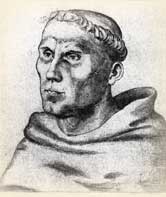 Since your majesty and your lordships desire a simple reply, I will
answer without horns and without teeth. Unless I am convicted by
scripture and plain reason--I do not accept the authority of popes and
councils for they have contradicted each other--my conscience is
captive to the Word of God. I cannot and I will not recant anything,
for to go against conscience is neither right nor safe. Here I stand, I
cannot do otherwise, God help me. Amen."
Since your majesty and your lordships desire a simple reply, I will
answer without horns and without teeth. Unless I am convicted by
scripture and plain reason--I do not accept the authority of popes and
councils for they have contradicted each other--my conscience is
captive to the Word of God. I cannot and I will not recant anything,
for to go against conscience is neither right nor safe. Here I stand, I
cannot do otherwise, God help me. Amen."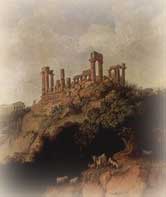 St. Eusebius is not one of those popes whose name brings instant
recognition like Gregory the Great, Hildebrand, Julius II or Leo X. It
appears he was pope only four months, and history is not even clear
whether it was in the year 309 or 310.
St. Eusebius is not one of those popes whose name brings instant
recognition like Gregory the Great, Hildebrand, Julius II or Leo X. It
appears he was pope only four months, and history is not even clear
whether it was in the year 309 or 310. I am a Christian and cannot sacrifice to the gods. I heartily
thank Almighty God who is pleased to set me free from the chains of this
body." With these bold words, spoken in front of hundreds of onlookers,
Bishop Cyprian of Carthage faced death under Emperor Valerian. Many of
the pagans standing by were deeply moved.
I am a Christian and cannot sacrifice to the gods. I heartily
thank Almighty God who is pleased to set me free from the chains of this
body." With these bold words, spoken in front of hundreds of onlookers,
Bishop Cyprian of Carthage faced death under Emperor Valerian. Many of
the pagans standing by were deeply moved.